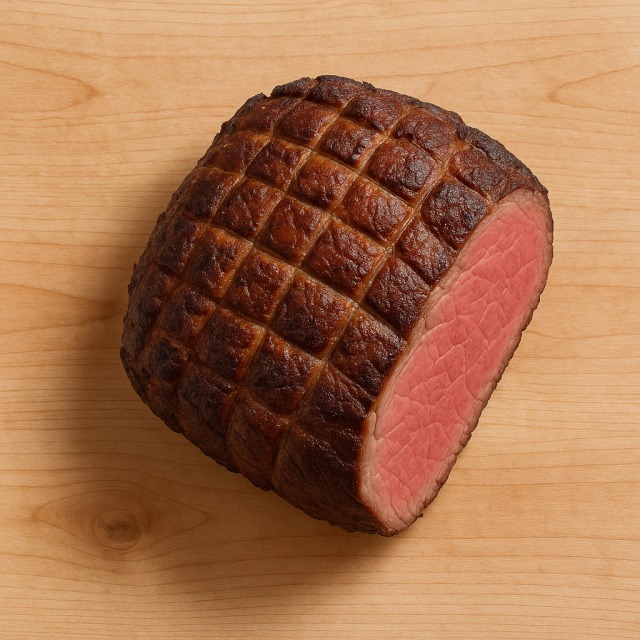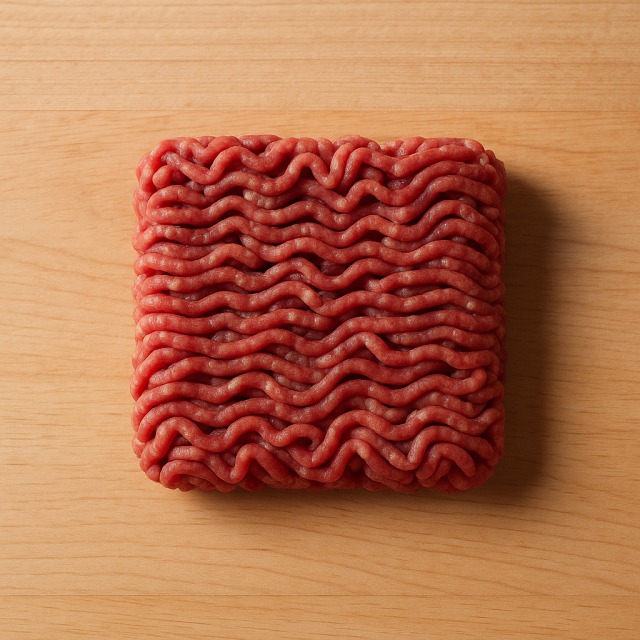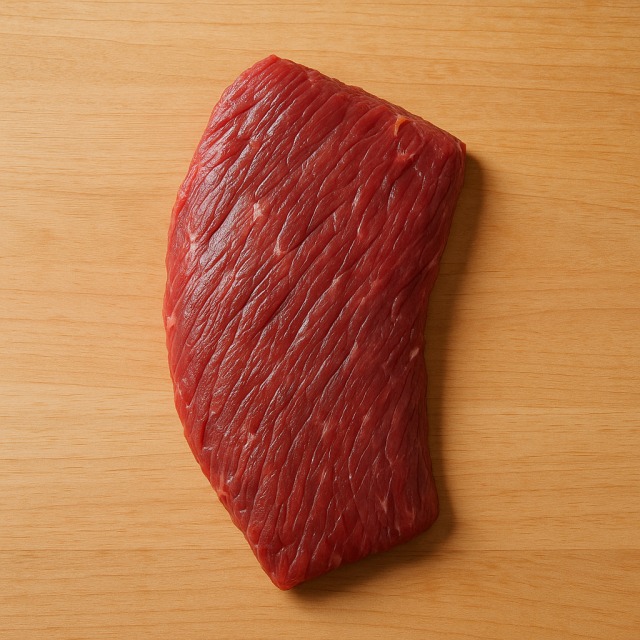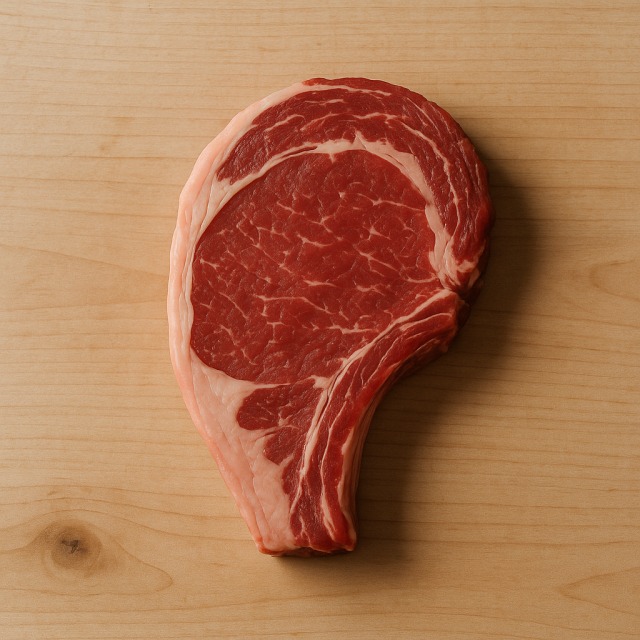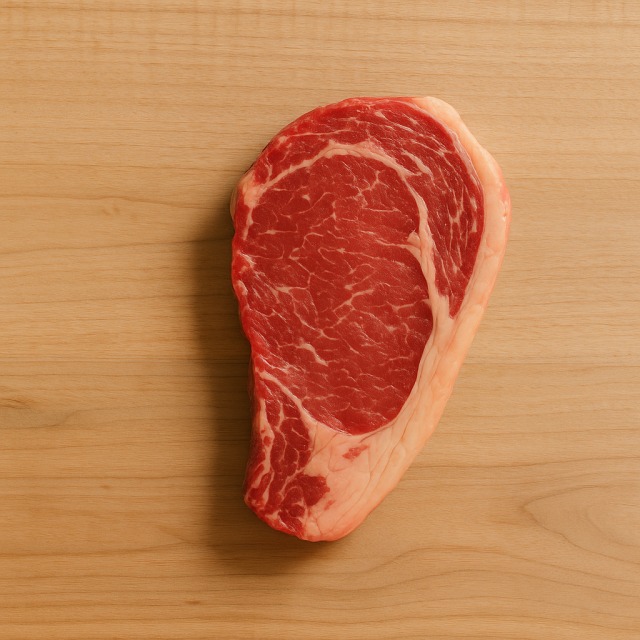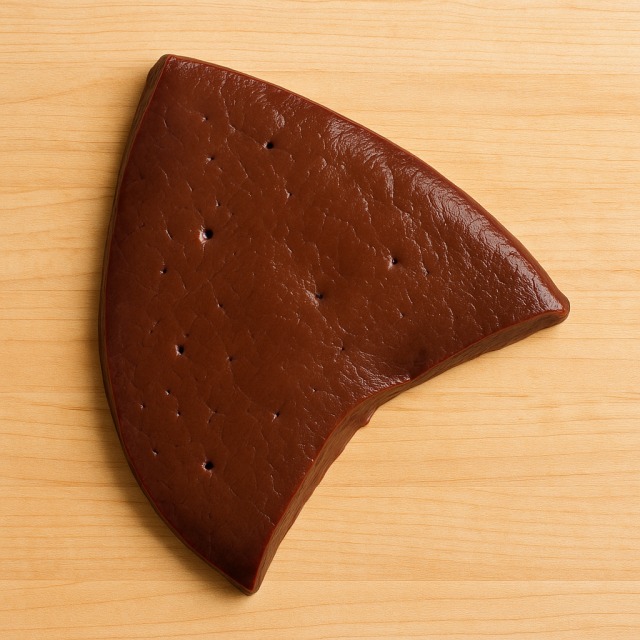Calorie Chart / Meat & Eggs / Beef - Bone-in rib steak
How Many Calories Are in Bone-in rib steak?
Calculation of the nutritional value & Recommended Dietary Intake of bone-in rib steak
For g and a calorie requirement of kcal
| Calories 514 kcal | Proteins 34 g | Lipids 42 g | Carbohydrates 0 g |
| 26% | 45% | 63% | 0% |
Health benefits of bone-in rib steak
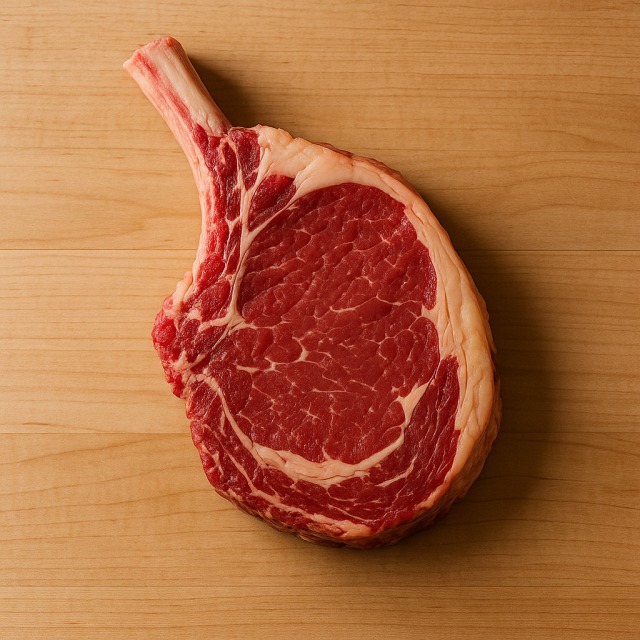
Bone-in rib steak - 100g
Calories 257 kcal
Proteins 17 g
Lipids 21 g
Carbohydrates 0 g
Bone-in rib steak is considered a high-calorie cut because of its generous marbling, yet those calories come with notable nutrients. Rich in complete proteins that deliver all the essential amino acids, it supplies vitamin B12 and niacin for energy metabolism, plus highly bioavailable heme iron that supports oxygen transport. Zinc and selenium contribute to immune function, while conjugated linoleic acid (CLA) is being studied for its supposed anti-inflammatory effects. Thanks to the bone, the steak retains more moisture and minerals during cooking, a detail prized by butchers since the 19th century. Although its calories are higher than leaner cuts, the savoury crust produced by the Maillard reaction has made bone-in rib steak a classic centrepiece of French "côte de bœuf" feasts. Remember: the quality of those calories varies with rearing conditions—grass-fed cattle often provide a more favorable omega-3 to omega-6 ratio.
Because it contains virtually no carbohydrates, most of its calories stem from fats (notably oleic acid, the same heart-friendly fat dominant in olive oil) and proteins, which promote satiety. These calories can therefore fit into a balanced diet when portion size and frequency are controlled. Finally, its collagen-rich connective tissue, slowly melted when the steak is cooked on the bone, provides glycine, an amino acid linked to joint health. Knowing how these calories are packaged helps you integrate this flavorful steak without exceeding daily energy needs.
Tips for incorporating bone-in rib steak into a balanced diet
If you are tracking calories yet still crave a bone-in rib steak, moderation and smart sides are key. Grill or oven-roast a 200 g portion and pair it with a large serving of steamed broccoli or a Provençal ratatouille; the fibre and water volume will dilute the overall calories of the meal while adding antioxidants. Avoid piling on butter—use a brush of vegetable oil before cooking instead. A classic chimichurri of parsley, garlic, and vinegar also adds flavour without many calories.
For a weekend treat, try a Bordelaise-style preparation: sear the steak, then finish it in the oven with a reduction of red wine and shallots. Serve alongside oven-roasted potato wedges lightly coated with smoked paprika; portion control keeps calories predictable. Athletes who need more calories for muscle recovery can complement the meal with a quinoa salad, whereas people aiming to lower calories could replace starch with a crisp salad of arugula and thinly sliced apple.
Leftover rib steak is excellent in a Thai-inspired salad: slice the cold meat thinly, mix with lime juice, fish sauce, chili, and plenty of cucumber. This refreshing dish spreads the original calories over several portions and adds vegetables. Like any high-calorie food, bone-in rib steak should not dominate your weekly menu; balance it with lean proteins such as chicken breast or oily fish like salmon to vary nutrient profiles while managing calories.
Frequently Asked Questions
- How many calories are in bone-in rib steak?
- There are 257 kcal per 100 g, so a typical 300 g côte de bœuf delivers about 770 calories before trimming.
- Is bone-in rib steak higher in calories than a beef filet?
- Yes, because it contains more intramuscular fat; those extra fats raise the calories significantly compared with a lean filet.
- Can I reduce the calories by trimming the fat cap?
- Trimming visible fat and choosing a 200 g serving instead of 300 g can cut calories by roughly 150–200 kcal while preserving flavour.
- Does grilling vs. pan-frying change the calories?
- Grilling allows some fat to drip away, potentially shaving 20–30 calories per 100 g compared with butter-based pan-frying, but the difference remains moderate.
- Are the calories in bone-in rib steak useful for muscle gain?
- Absolutely—its high protein supports muscle repair, and the additional calories from fat supply energy for hypertrophy phases.
Similar foods
Information provided by Calorie Menu may contain inaccuracies or errors. It cannot, under any circumstances, substitute medical advice or medication.
